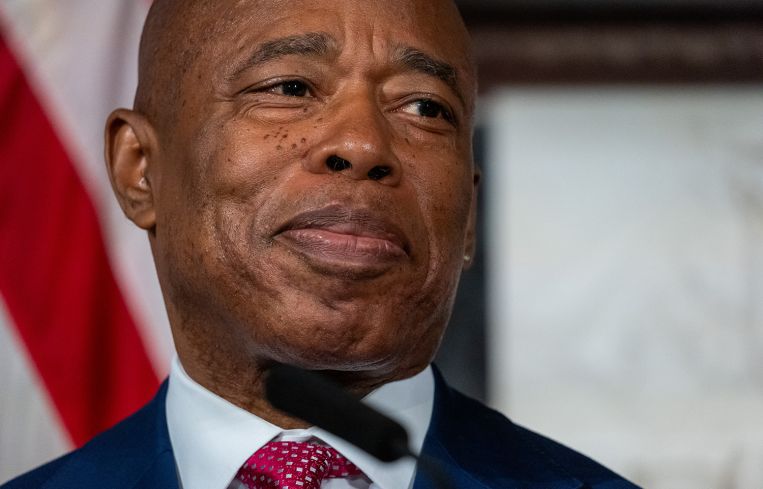Mayor Adams Tries to Spur More Housing Development With New Zoning Changes
Eric Adams asks NYC for a ‘yes’ on more housing
By Abigail Nehring April 11, 2024 12:48 pm
reprints
New York City planning officials and Mayor Eric Adams proposed zoning changes Thursday to tackle the housing crisis by building a little more in every neighborhood.
The third and final “City of Yes” citywide text amendment promises to add about a fifth of the mayor’s “moonshot” goal of 500,000 housing units throughout New York City over the next 10 years, according to the Department of City Planning.
The zoning changes would give developers permission to increase building density by about 20 percent for new housing construction that’s affordable to families earning 60 percent of the area median income — a deeper level of affordability than the now-defunct 421a state tax abatement previously incentivized.
And it brought praise from a coalition of about 125 pro-housing organizations that have anxiously awaited city planning’s final figures on affordability and got more than they were originally hoping for.
“We really want to see housing policy that matches where the need is,” said Rachel Fee, executive director of the nonprofit advocacy group New York Housing Conference. “We think that affordable housing should be targeted to low-income households.”
The zoning proposal also would make city blocks close to mass transit and along commercial corridors automatically eligible for new apartment buildings up to five stories tall. It also would allow homeowners in low-density neighborhoods to add extra apartments in basements, backyards or garages, known as accessory dwelling units.
And it would lift controversial parking mandates that currently constrict new housing development in much of the city’s outer borough neighborhoods — something housing advocates say is long overdue.
“The human consequences of our housing shortage are clear: rising rents, homelessness, displacement, and an imbalance of power between landlords and tenants,” City Planning Commissioner Dan Garodnick said in a statement. “City of Yes for Housing Opportunity would help alleviate this crisis by providing New Yorkers with more housing choice, and the release of the draft zoning text is an important step toward making that happen.”
The proposed changes are broad, yet incremental. City planning officials want to increase the supply of so-called “missing middle” housing, or medium-sized apartment buildings in locations primed for growth.
Adams set out to change the city’s restrictive zoning laws when he laid out his multiyear housing “blueprint” shortly after taking office in 2022.
Rental vacancy plummeted to an alarmingly low 1.4 percent that year as New Yorkers returned to the city in droves after the pandemic. Despite some resistance from some local groups on the plan, a growing array of voices have joined the mayor’s “City of Yes” rallying cry.
“That’s really saying ‘yes’ to more housing, more affordable housing in every neighborhood, and a set of reforms that we think New York City needs to add more residential zoning capacity to bring rents down,” Fee said.
And many think changing the zoning to allow for more housing development in the city has been a long time coming.
“We’ve down-zoned so much of the city, and now there’s nothing more important than to build housing,” said Gregg Pasquarelli, a founding principal of SHoP Architects. “We’ve been talking about this for 20 years.”
But Pasquarelli will have to hope for Albany to address his chief concern — the 1960s-era cap on the floor area ratio of residential buildings.
“Height limits create gated communities in cities,” Pasquarelli said. “People want to live here and there’s nowhere to live.”
Aside from the housing proposal, Adams already released two other “City of Yes” proposals. One is intended to revamp the city’s commercial zoning while the other aims to spur more green development.
The housing zoning changes will now undergo public review, with the city’s 59 community boards taking a first look before the proposals head to the borough presidents and get a binding vote from the City Planning Commission, then the City Council.
It’s a process that tends to leave battle scars. Vanishingly few community boards supported former Mayor Bill de Blasio’s Mandatory Inclusionary Housing zoning initiative to entice developers to add more affordable apartments in projects in exchange for public funding. But this time could be different, thanks to a wave of pro-housing members taking over the boards.
City Council Speaker Adrienne Adams also signaled support, saying in a statement she was happy with the affordability levels in the new proposal.
“I welcome these changes,” Speaker Adams said. “Once the citywide text amendment makes its way through the public review process, the council looks forward to fully reviewing it.”
Abigail Nehring can be reached at anehring@commercialobserver.com.


